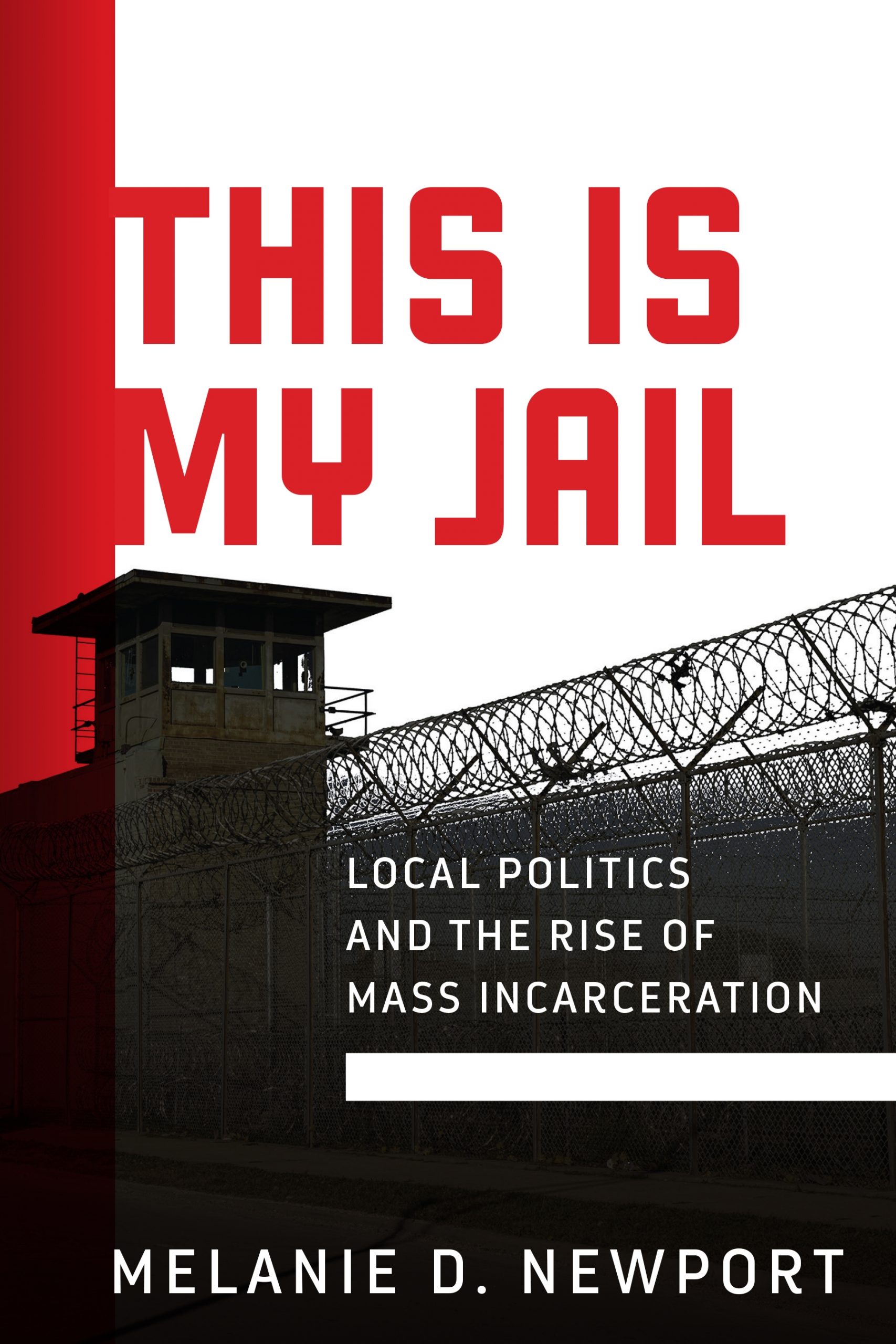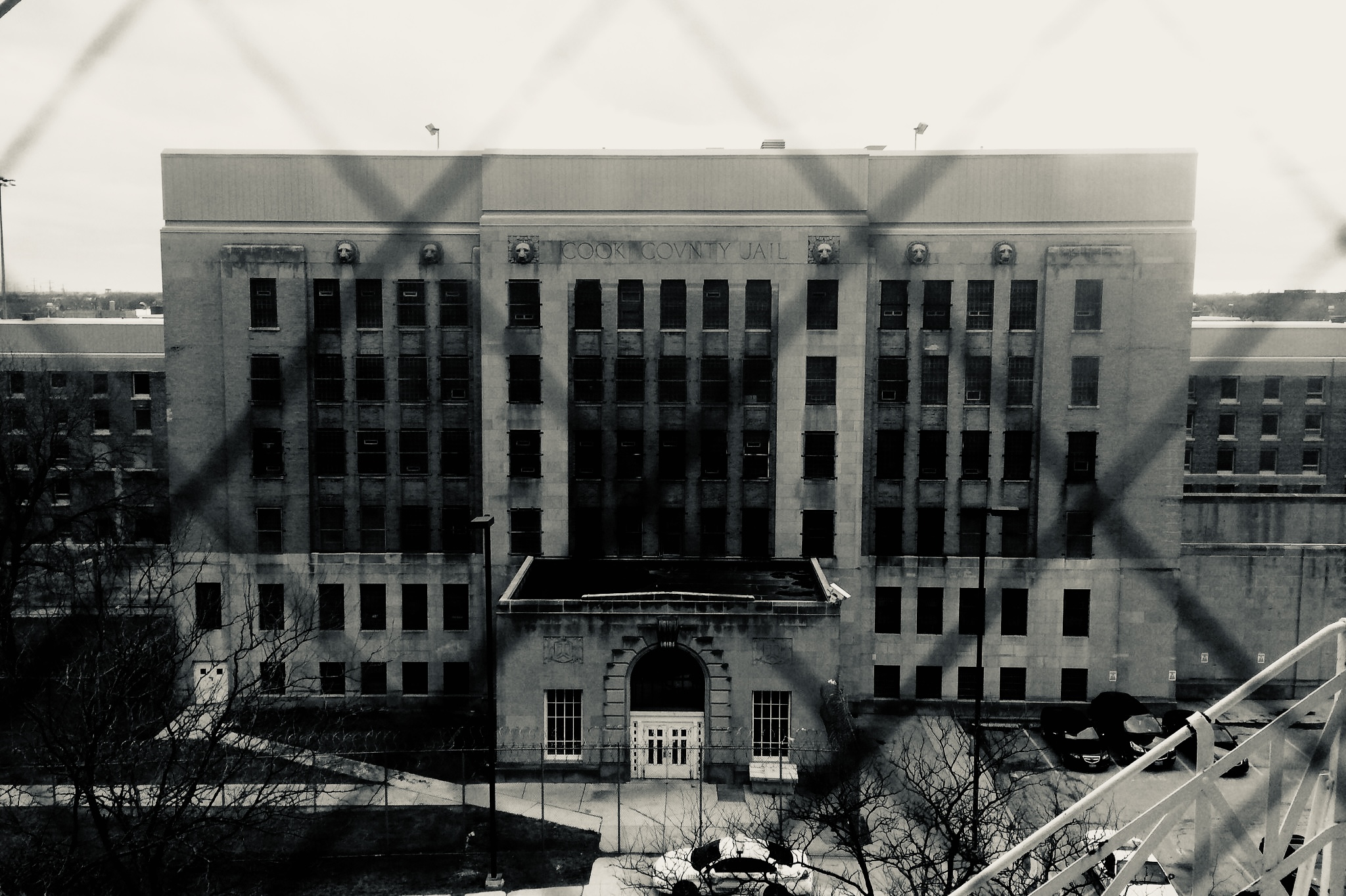In 1967, a few weeks before Christmas, a group of Black prisoners gathered in a dayroom in the Cook County Jail to draft a letter to the Reverend Martin Luther King Jr. For more than a year, King had been pressuring Mayor Richard Daley to desegregate housing in Chicago. The prisoners asked that King would now turn his attention to the jail, which was the focus of a grand jury panel that had been recently convened to investigate a series of murders and violent crimes against jailed people at the jail.
Perhaps they passed around drafts of their letter, hoping to get it right. In the end, one of them likely sat at one of the wooden picnic tables that furnished the dayrooms, where he wrote on a small piece of lined paper in neat and beautiful cursive. The letter shifted between declarations of the men’s willingness to fight back and a cautious, deliberate cry for help. They aimed to inform the grand jury and the public about “facts and simple truths, about this institution, the officials and criminal courts system.” And King, they believed, might help to ensure that they would “be allowed a chance to stand up and fight for justice within this criminal institution and its system.”

Over the previous weeks, the men had followed, in newspapers and on the tiny dayroom television, the development of a scandal over who was responsible for violence in the jail. “See, in these games of power, once again, we are the scapegoats,” they told King. While public discourse shifted the blame away from neglectful wardens and staff and characterized the facility as a “big jungle” full of barbaric prisoners, the men of tier D-1 vacillated between empowerment and fear. In an echo of “we the people,” they repeatedly declared themselves “we the inmates,” asserting a collective personhood and citizenship that made them worthy of due process and justice, and, at the same time, in need of more powerful advocates and vulnerable to “games of political power.” Despite support from two Black women pastors, Juanita Whitfield and Jessie “Ma” Houston, they feared Black people had abandoned them. “We have tried in vain to reach the concience of respectable Negroes.” In contrast to the depictions of relentless, dehumanizing violence that the grand jury would hear, the letter documents the fervent wishes for deliverance that prisoners held as Christmas drew near. It is not hard to imagine that many letters with this tone of desperation were sent out from all the jail’s tiers as the public came to know their plight. Twenty-nine men signed their names and added their prison identification numbers to the letter’s back page on behalf of the “Inmates of D-1.”
Prisoners understood that creating the political conditions necessary for the transformation of the jail had much to do with the partisan ploys for power by the local sheriff, Joseph Woods. Their testimonies proved foundational to public understandings of Chicago’s jails as sites of violence. But as the public came to understand local jails as a site of the urban crisis, they often were accompanied by media depictions of jail violence that centered white victimhood and characterized Black prisoners as especially brutal and beyond control. This, in turn, created space for punitive politics, with Woods managing to use talk of jail reform as a way to publicize and naturalize racist ideas.
Prisoners understood that creating the political conditions necessary for the transformation of the jail had much to do with the partisan ploys for power by the local sheriff, Joseph Woods. Their testimonies proved foundational to public understandings of Chicago’s jails as sites of violence.
Law-and-order politics, which was manifest in concerns over disorder in Chicago’s jails, coalesced in explicit backlash to protest movements and narrowed the chance for meaningful assertions of prisoners’ rights. The intersection of the nascent prisoner rights movements and Woods’s desire to control jailing in Chicago reveals that political power over jailing hinged on whether politicians could successfully dehumanize prisoners and delegitimize their struggles.
Between 1964 and 1968, hundreds of uprisings occurred throughout the United States. In cities large and small, from Newark to Los Angeles to Cairo, Illinois, Black residents demonstrated their mounting frustrations with police brutality and a growing impatience with nonviolent protest strategies. These uprisings marked a pivotal moment for policing power in the United States. With the uprisings came a rediscovered support for punitive politics, including the signing of the 1968 Omnibus Crime Control and Safe Streets Act, which expanded President Lyndon Johnson’s war on crime by channeling funds to police departments. The civil disorder of the mid-1960s and the political response to it assuredly contributed to the diminished power of liberalism and the ascendance of conservative politics.
Even as civil unrest across the country was attended by demands for community control over the police, experiments with police demilitarization, and highly visible images of police violence, the Jim Crow resonances of sheriffs’ power — undergirded as they were by self-interest, corruption, and racist violence — were becoming less tenable. Sheriffs governed many of the nation’s estimated 3,000 jails, and there was growing evidence that they were not doing a very good job. In 1964, a federal Bureau of Prisons official charged that some 2,000 jails had been “tagged as disapproved” for housing federal prisoners following inspections.
Sheriffs saw these uprisings as opportunities for consolidating their power over policing and incarceration regimes at the metropolitan level amid concerns that unrest would continue in urban jails. One of the best-known urban uprisings, the 1965 Watts rebellion in Los Angeles, occurred in the jurisdiction of sheriff Peter Pitchess. Sparked by a drunk-driving arrest, the Watts rebellion saw the burning of Black Los Angeles for six days and nights, during which city police officers arrested nearly 4,000 people. By this time, Sheriff Pitchess had gained a reputation as “the consummate white collar cop.”
More from our decarceral brainstorm
Every week, Inquest aims to bring you insights from people thinking through and working for a world without mass incarceration.
Sign up for our newsletter for the latest.
Newsletter
Press reports suggested Pitchess’ college education placed him above the old-school corruption that had once defined the office, and like his colleague, Joseph Lohman, in Chicago, he advocated for jail reform through professionalization and expansion of his jails’ treatment capacities. The rebellion had been presaged by the opening of the Los Angeles Men’s Central Jail and the Sybil Brand Institute for Women in 1963, and the Mira Loma Detention Center in 1964. In the wake of Watts, Pitchess shifted his rationale for jail expansion from institutional modernization to sustaining law and order. The demand for sheriff’s deputies during the riot was so great that in its wake, Pitchess eliminated the position of “correction officer” and made it so that his jails were staffed by sheriff’s deputies who could respond to unrest at a moment’s notice. Eliminating the distinction between sheriff’s police and guards was an innovation not widely copied — most sheriffs neither wanted to nor could compensate jail guards as much as sheriff’s deputies — but it was a telling example of how urban rebellions intensified the relationship between policing and jailing. Pitchess’s habit of bullying the Los Angeles Board of Supervisors for pay raises, hiring, and jail expansion depended on his ability to raise concerns about crime. Declaring in 1967 that Los Angeles was a “hot bed of agitation and civil rights tension,” he demanded more resources. If not, he charged, “we are at a point of no return.” Three years later, an expansion at the Men’s Central Jail sparked a new wave of local jail construction. Pitchess’s image of professionalism and political acumen made him a model for other sheriffs facing the fires of urban unrest.
In Cook County, the one-term limit placed on the office of sheriff remained a major constraint in accumulating the clout that Pitchess had acquired in Los Angeles. During a two-day uprising by over 1,000 Black residents in suburban Dixmoor in 1964, Republican Cook County Sheriff Richard Ogilvie mobilized 142 sheriff’s police to put down the unrest, after allegations that a Black woman had been beaten by a liquor store owner for shoplifting. In the moment, Ogilvie told sheriff’s deputies to tell rioters over loudspeakers, “If you shoot, we’re going to fire back.”
Two years later, as the struggle for “good government” and the creation of the Cook County Department of Corrections played out in the state legislature, Woods, a Republican, was elected Cook County sheriff. Woods had worked as an agent in J. Edgar Hoover’s Federal Bureau of Investigation from 1951 to 1961, during an era in which Hoover was preoccupied with maintaining its mythical “professional, nonpartisan” reputation. He was a perfect “G-man” for the moment: A white Irish Catholic father of ten who followed the rules in an FBI that was busy fighting internal threats to democracy. Woods returned to Chicago to work as a corruption investigator for the Better Government Association. Founded in 1923, the BGA was, according to the Chicago Tribune, a “privately-financed watchdog organization” that had, since the late 1950s, helped reporters root out corruption in Daley’s machine.
As part of a Republican ticket advanced to challenge Daley, Woods ran against Minor Wilson, a seasoned attorney and former assistant who had been handpicked for the Democratic ticket by Daley. Winning by 23,100 votes, Woods was part of a Republican sweep of county positions in 1966 that elevated his Republican predecessor, Richard Ogilvie, to president of the county board. Ogilvie touted the Republican victory as a response to “the arrogance and the failures of Democratic administrations from Chicago’s city hall all the way to Washington.”
First on Woods’s agenda was pressuring the state to unify the Cook County Jail and the city of Chicago’s jail, the House of Correction, as a means of expanding his authority. Woods suggested that Daley’s resistance to unifying the jails was part of the self-serving corruption of his Democratic organization. With support from Republican legislators, Woods and Ogilvie advanced a revised version of the CCDOC legislation. While it would be governed day-to-day by a nonpartisan director and board, the CCDOC would also be under control of the sheriff.
Resistance to the bill came swiftly. The Correctional Officers Association questioned whether a sheriff should be responsible for jailing: the whole point of the CCDOC proposal had been to depoliticize jail governance. They looked to the record of previous sheriffs, noting that despite rhetorical support for rehabilitation, no such program had been permanently established at Cook County Jail. As to Sheriff Woods, they argued that an inexperienced politician had no business involving himself in penology. If Woods valued his anticorruption commitments, he would keep rehabilitation programming “under the jurisdiction of professional and civil service employees.”
Woods’s anticorruption platform was also less deep than his commitment to law-and-order politics, a fact that became apparent amid challenges to police brutality and the rise of the Chicago Freedom Movement. Over the course of 1965 and 1966, Dr. Martin Luther King had united with local activists in a direct-action campaign to end racial discrimination in real estate, hoping to pressure Mayor Daley to implement an open housing ordinance. But King’s presence was not enough to curb unrest. In August 1965, just a day after the Watts rebellion, police arrested 150 people in West Garfield Park after African Americans protested and broke windows when an accident with a fire truck killed a young woman. The following year, in June 1966, Puerto Ricans on Division Street protested for four days after the police killed a young person. Less than a month later, in July, disturbances spread across the Black West Side after police stopped children from playing in a fire hydrant. The culmination of more than a decade of rising tensions with the city, and police especially, the uprisings had highlighted Mayor Daley’s struggle to maintain control over the city.
As Daley and city officials downplayed the grievances of nonwhite people, Woods resisted making public statements about the violence during his campaign. But after his election, he went on a junket to white communities with histories of violent rejection of civil rights activism whose votes had supported the Republican sweep. No longer needing “Daley” as a shorthand for talking about race, Woods explicitly fomented the politics of white backlash against civil rights and in defense of police racism. Like Los Angeles County sheriff Peter Pitchess, Woods came to understand that uprisings could be used to increase his political power as sheriff.
He reserved his most scalding words for Cicero, a suburb where Cook County Jail Warden Jack Johnson had tried to stop white rioting over integration in 1951, and where Sheriff Richard Ogilvie had led calls to send in the National Guard to stop the civil rights marchers in 1966. After Martin Luther King Jr. suggested that marchers might return there in 1967, Woods told a Republican gathering that while he believed in the rights of marchers, he might need to call up members of a one-thousand-person Republican supper club and “every adult in Cook County” to maintain order. “There is only one way to control a mob — through fear,” he said. Echoing Ogilvie at Dixmoor, he declared, “If they shoot, we’ll shoot back.”
Woods’s law-and-order politics gained further renown when he became the Illinois point man for the campaign of Republican presidential candidate Richard Nixon. Publicity said Woods was “regarded as a straight-shooter by lawmen and the public alike,” a man who had already anticipated Nixon’s punitive platform. Woods’s efforts to foster suburban fears of Black protest were not unique. In Philadelphia, white framings of their own “proud neighborhoods” cast against Black “urban jungles” made conservative law-and-order politics appealing to white suburban communities in the wake of Black uprisings. Whether Black communities were worthy of protection and accountability was an animating question in 1960s municipal politics across the United States. With Sheriff Woods eager to leverage uprisings to enhance his political authority, he put protecting white communities from Black people at the top of his governing agenda. It was in the jail, not the streets, that this would happen.
Excerpted from This Is My Jail: Local Politics and the Rise of Mass Incarceration, by Melanie D. Newport. Excerpted with permission of the University of Pennsylvania Press.
Image: pmonaghan/Flickr

